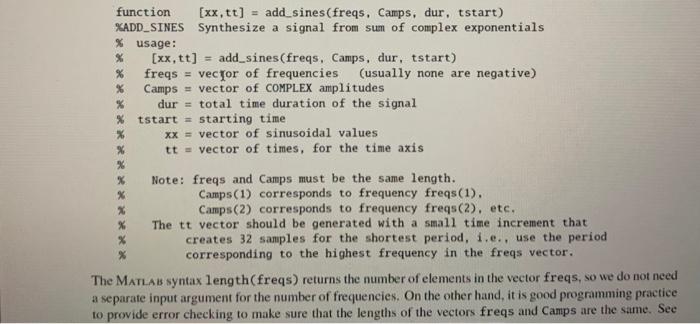Answered step by step
Verified Expert Solution
Question
1 Approved Answer
The instructions are to create a function named add_sines which would add mutiple signals into one and the hints are given as shown, we are
The instructions are to create a function named add_sines which would add mutiple signals into one and the hints are given as shown, we are not allowed to used for loops or any type of loops 

Step by Step Solution
There are 3 Steps involved in it
Step: 1

Get Instant Access to Expert-Tailored Solutions
See step-by-step solutions with expert insights and AI powered tools for academic success
Step: 2

Step: 3

Ace Your Homework with AI
Get the answers you need in no time with our AI-driven, step-by-step assistance
Get Started


